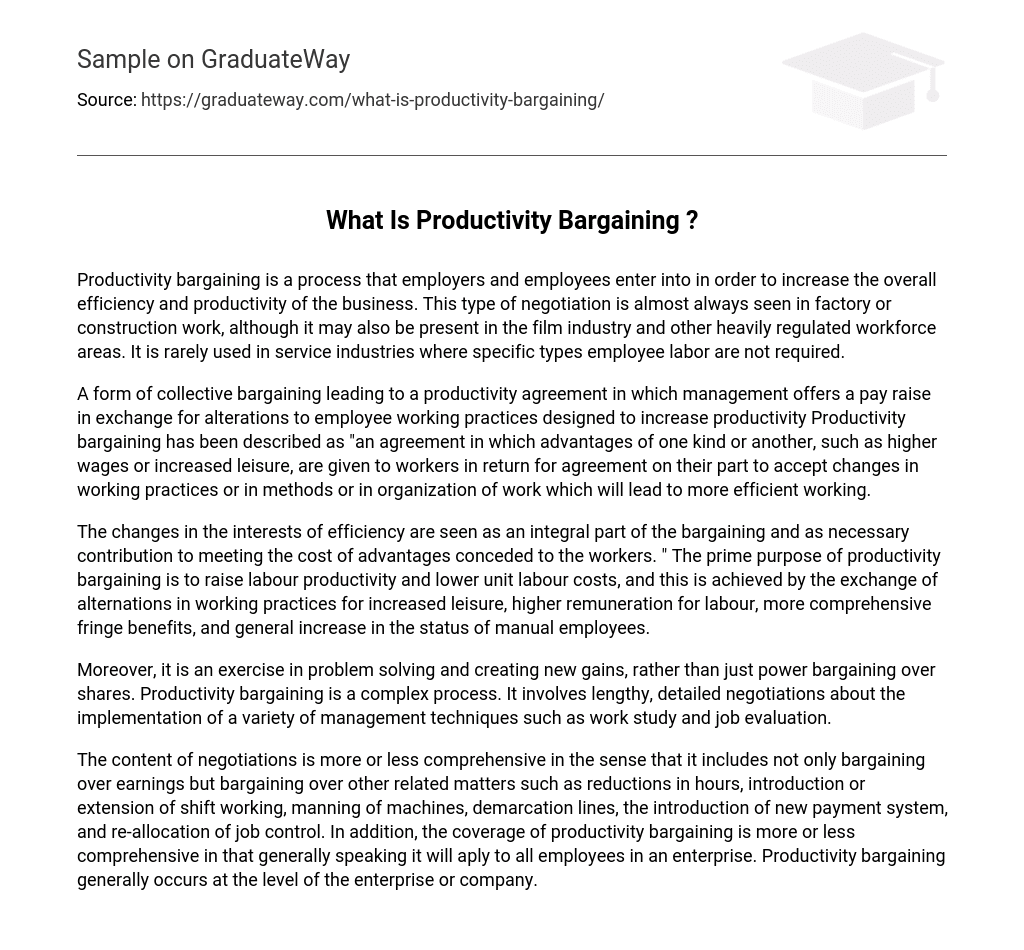Productivity bargaining is a process that employers and employees enter into in order to increase the overall efficiency and productivity of the business. This type of negotiation is almost always seen in factory or construction work, although it may also be present in the film industry and other heavily regulated workforce areas. It is rarely used in service industries where specific types employee labor are not required.
A form of collective bargaining leading to a productivity agreement in which management offers a pay raise in exchange for alterations to employee working practices designed to increase productivity Productivity bargaining has been described as “an agreement in which advantages of one kind or another, such as higher wages or increased leisure, are given to workers in return for agreement on their part to accept changes in working practices or in methods or in organization of work which will lead to more efficient working.
The changes in the interests of efficiency are seen as an integral part of the bargaining and as necessary contribution to meeting the cost of advantages conceded to the workers. ” The prime purpose of productivity bargaining is to raise labour productivity and lower unit labour costs, and this is achieved by the exchange of alternations in working practices for increased leisure, higher remuneration for labour, more comprehensive fringe benefits, and general increase in the status of manual employees.
Moreover, it is an exercise in problem solving and creating new gains, rather than just power bargaining over shares. Productivity bargaining is a complex process. It involves lengthy, detailed negotiations about the implementation of a variety of management techniques such as work study and job evaluation.
The content of negotiations is more or less comprehensive in the sense that it includes not only bargaining over earnings but bargaining over other related matters such as reductions in hours, introduction or extension of shift working, manning of machines, demarcation lines, the introduction of new payment system, and re-allocation of job control. In addition, the coverage of productivity bargaining is more or less comprehensive in that generally speaking it will aply to all employees in an enterprise. Productivity bargaining generally occurs at the level of the enterprise or company.





